Five of the Best from The Rolling Stones
Five of the Best from The Rolling Stones
1. Sticky Fingers (1971)
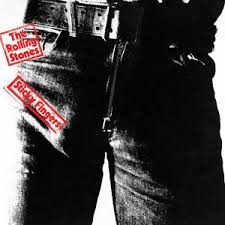
Sticky Fingers isn't your typical rock and roll record. Released in 1971, it finds the band at a creative peak, exploring blues, country, and soulful influences alongside their signature hard rock sound. This genre-bending approach is evident on hits like "Brown Sugar," a high-octane rocker with a controversial lyrical edge, and the introspective ballad "Wild Horses."
Sticky Fingers also pushes boundaries with its iconic cover art – a close-up of a crotch encased in denim, complete with a working zipper (censored in some countries!). This rebellious attitude extends to the music, with Mick Jagger's lyrics tackling themes of love, loss, and drugs with raw honesty.
Sticky Fingers remains a landmark in rock history, a genre-defying classic that cemented The Rolling Stones' status as musical innovators.
Click here to purchase Sticky Fingers
2. Exile on Main St. (1972)
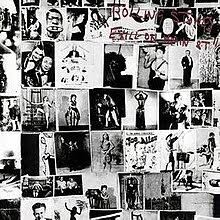
Exile on Main St. wasn't an average studio album. Recorded in a ramshackle villa in France amidst tax exile and personal turmoil, the 1972 double album is a loose, blues-soaked masterpiece. Keith Richards' signature riffs intertwine with Mick Jagger's soulful vocals on iconic tracks like "Tumbling Dice" and "Rocks Off," creating a raw and spontaneous sound.
Exile on Main St. isn't afraid to explore different moods. Tracks like "Shine a Light" showcase gospel influences, while ballads like "Sweet Virginia" offer a welcome melancholic contrast. Despite its sprawling nature and initial mixed reviews, Exile on Main St. has become a cult classic, praised for its authenticity, timeless songwriting, and bluesy swagger. It's a testament to The Rolling Stones' ability to create magic even in the most chaotic circumstances
Click here to purchase Exile on Main St.
3. Beggars Banquet (1968)
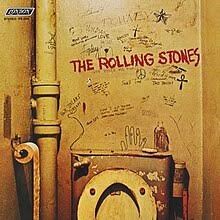
Beggars Banquet marked a turning point for the band. They shed the psychedelic experimentation of their previous release and embraced a darker, more stripped-down sound with blues and rock roots. This shift is evident on the opening track, "Sympathy for the Devil," a haunting masterpiece with layered vocals and a slow, menacing groove.
Beggars Banquet isn't afraid to tackle social and political issues. "Street Fighting Man" captures the revolutionary spirit of the late 60s, while "Stray Cat Blues" explores themes of alienation and disillusionment. However, the album isn't all darkness. Tracks like "No Expectations" offer a melancholic beauty, and Mick Jagger's vocals shine throughout.
Beggars Banquet remains a cornerstone of classic rock, praised for its raw energy, innovative production, and iconic songwriting. It's a testament to The Rolling Stones' ability to evolve and challenge musical boundaries.
Click here to purchase Beggars Banquet
4. Let It Bleed (1969)
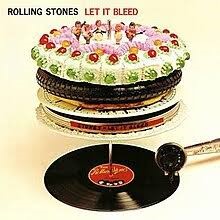
Let It Bleed, is a genre-bending exploration that solidified their place as musical innovators. The album seamlessly blends bluesy rock with elements of country, gospel, and psychedelia. This diversity is evident on iconic tracks like "Gimme Shelter," a dark and atmospheric masterpiece featuring Merry Clayton's unforgettable vocals, and "You Can't Always Get What You Want," a gospel-infused anthem with a timeless message.
Let It Bleed doesn't shy away from raw emotions. Mick Jagger's vocals on "Honky Tonk Women" ooze swagger, while the bluesy ballad "Midnight Rambler" delves into darker themes. Keith Richards' signature riffs and Charlie Watts' drumming provide a solid foundation for the band's experimentation.
Let It Bleed continues to be a critical and commercial success. It's praised for its genre-defying approach, powerful songwriting, and iconic guest appearances. This album is a must-listen for any classic rock fan and showcases the enduring legacy of The Rolling Stones.
Click here to purchase Let it Bleed
5. Aftermath (1966)
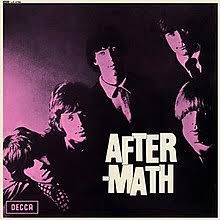
Aftermath, marked a significant shift in their sound. Moving beyond their early blues-rock roots, they experimented with studio techniques and embraced a more introspective and melodic approach. This is evident in the use of non-traditional instruments like sitar and marimbas, adding a unique texture to tracks like the hauntingly beautiful "Paint It, Black."
Aftermath isn't afraid to explore darker themes. Songs like "Under My Thumb" showcase a more cynical and brooding side to the band, while "Out of Time" delves into feelings of alienation. However, there are flashes of pop brilliance too, evident in the catchy melody of "Lady Jane."
Despite initial criticism for its departure from their familiar sound, Aftermath has become a cult classic. It's praised for its innovative recording techniques, Brian Jones' multi-instrumental contributions, and Mick Jagger's evolving songwriting. Aftermath remains a testament to The Rolling Stones' willingness to experiment and push creative boundaries.
Click here to purchase Aftermath
Recent Posts
Queen studio albums: A Review
Phil Collins Albums Ranked & Reviewed – Complete Guide to Every Studio Album
The best of Massive Attack
Let’s Make Magic
Book Your Event DJ Now




